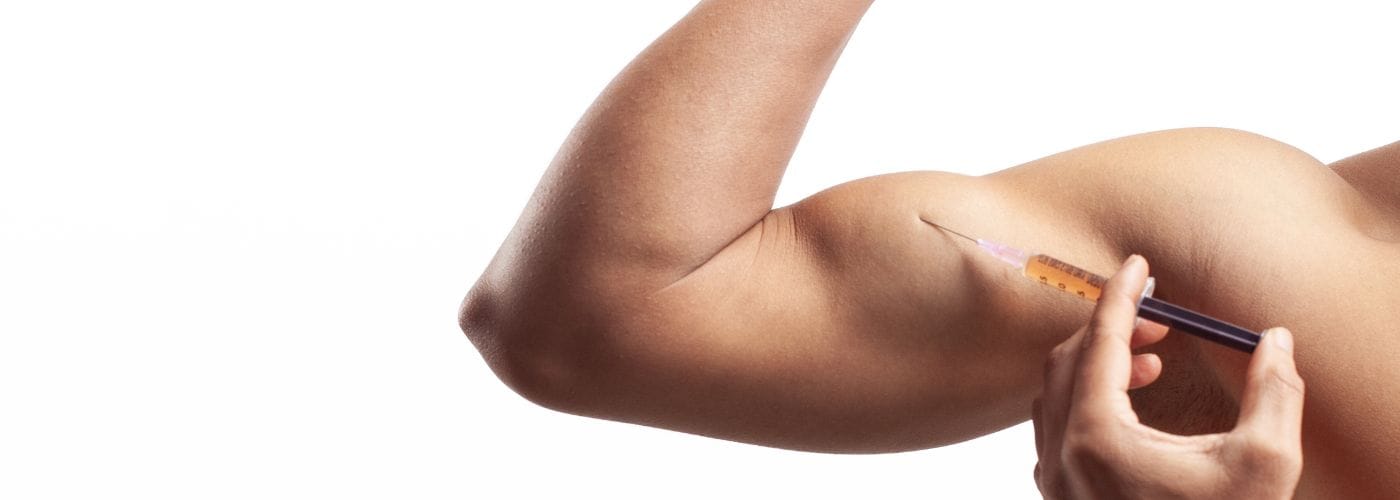Testosterone therapy has become a cornerstone in managing hormonal imbalances, particularly for those with low testosterone levels. While injections are a common method of administration, many may wonder what happens if testosterone isn’t injected directly into the muscle as intended.
This blog dives into the implications of improper administration, exploring how it affects absorption, efficacy, and overall health outcomes. Join us as we unravel the science behind testosterone delivery methods and the potential consequences.
Why Testosterone Therapy Matters
Testosterone is the primary male sex hormone, though it also plays roles in female physiology (albeit in smaller amounts). In men, testosterone is responsible for the development of male characteristics such as muscle mass, bone density, and body hair.
It also plays a significant role in mood regulation, sexual drive, and red blood cell production. When levels drop below a certain threshold, whether because of aging, medical issues, or other factors, individuals can experience a variety of symptoms such as fatigue, low libido, depression, and decreased muscle mass.
Methods of Delivery
There are multiple ways to introduce testosterone into the body, including topical gels, patches, pellets, and injections. Injections are often preferred due to their reliability, efficiency, and the ability to tailor dosing more precisely.
Common Injection Sites
- Intramuscular (IM) Injections: Delivered deep into the muscle, typically in the gluteus (buttock), deltoid (upper arm), or vastus lateralis (thigh).
- Subcutaneous (Sub-Q) Injections: Injected into the fat layer beneath the skin, often in the abdomen or thigh.
Traditionally, testosterone injections have been given intramuscularly to aid rapid absorption. Some medical professionals, however, have started using subcutaneous routes to reduce pain and scarring. Each method has its own advantages and considerations.
What Happens If Testosterone Is Injected Directly into the Bloodstream?
Injecting testosterone directly into a vein (intravenous injection) is not a standard practice and can be dangerous. While accidents are uncommon, it’s important to understand why medical experts caution against administering testosterone directly into the bloodstream:
Risk of Embolism
Testosterone formulations are usually oil-based. When oil enters the bloodstream in large quantities, there is a risk of forming an oil embolus, which could travel to the lungs and lead to serious complications.
Sudden Hormone Spike
An intravenous route offers no controlled release. Instead, you get an immediate surge of testosterone. This abrupt hormone spike can cause side effects such as palpitations, anxiety, or other cardiovascular symptoms.
Adverse Reactions
Because intravenous injections bypass the body’s typical absorption process, there is a greater risk of serious allergic reactions.
Potential for Infection
Any improper injection technique increases the risk of infection. Injecting into a vein without proper technique can also damage blood vessels and surrounding tissues.
In short, there is good reason why experts stress the importance of injecting testosterone into muscle tissue or the subcutaneous layer rather than directly into the bloodstream.
If you suspect you have accidentally injected testosterone into a vein or are experiencing any unusual symptoms—such as shortness of breath, heart palpitations, or chest pain—immediately seek medical attention.
Step-by-Step Guide: How to Properly Inject Testosterone
Whether you are injecting into your muscle or subcutaneously under medical guidance, adhering to best practices is crucial for safety and efficacy. Below is a general guide; however, always follow the specific instructions of your healthcare provider.
1. Gather Your Supplies
- A vial of your prescribed testosterone
- A sterile needle and syringe (your healthcare provider will specify size)
- Alcohol swabs
- A bandage (if needed)
2. Wash Your Hands
Hygiene is paramount. Make sure you thoroughly wash your hands to reduce the risk of infection.
3. Prepare the Vial
Gently roll the vial of testosterone between your palms if the instructions specify (this can help mix the solution, though many testosterone formulations do not require shaking).
Clean the rubber stopper of the vial with an alcohol swab to sterilize.
4. Draw the Medication
- Attach a drawing needle (often a slightly larger gauge) and syringe.
- Pull back the plunger to draw air into the syringe (an amount roughly equal to the dosage).
- Inject the air into the vial to create a slight positive pressure, making it easier to draw the testosterone.
- Draw the prescribed amount of testosterone into the syringe, keeping an eye out for air bubbles. If bubbles appear, tap the syringe gently to move them to the top, then push the plunger to remove excess air.
5. Switch to the Injection Needle
- Remove the drawing needle carefully and attach a fresh, sterile injection needle.
- This ensures the needle tip is sharp and uncontaminated for your injection.
6. Select the Injection Site
- For IM injections: Common areas include the upper outer quadrant of the buttock, the deltoid, or the lateral thigh.
- For Sub-Q injections: Choose a fatty area in the abdomen or thigh, following medical advice.
- Clean the chosen injection site with an alcohol swab and allow it to dry.
7. Administer the Injection
- IM Injections: Hold the syringe like a dart, insert it at a 90-degree angle into the muscle. Slowly press the plunger to release the medication.
- Sub-Q Injections: Pinch the fatty tissue if needed, and insert the needle at a 45- to 90-degree angle (per your provider’s instructions). Inject the medication slowly.
- Remove the needle gently and apply light pressure with a sterile gauze if necessary.
8. Dispose of Sharps Safely
- Discard your syringe and needle in an approved sharps container.
- Wash your hands again to ensure cleanliness.
9. Monitor for Reactions
- Watch for any redness, swelling, or discomfort at the injection site.
- Contact your healthcare provider if you notice persistent pain or unusual symptoms.
Frequently Asked Questions
Can I switch from an intramuscular injection to a subcutaneous injection on my own?
Always consult your healthcare provider before making any changes. The absorption rate, dosage, and injection intervals may need to be adjusted if you switch.
Why do I feel sore after an IM injection?
Some soreness is normal, especially if you’re new to injections. The muscle tissue can be sensitive. Using a proper technique, rotating injection sites, and applying a warm compress to the area can help reduce discomfort.
What happens if testosterone is not injected into the muscle, but subcutaneously?
If your prescription specifically indicates an IM injection, injecting subcutaneously could alter absorption rates. This may lead to inconsistent hormone levels and less predictable results. Always follow medical advice.
How quickly will I see results from testosterone therapy?
Responses vary. Some individuals notice improvements in energy and libido within a few weeks, while others may need a couple of months for significant changes. This treatment may help with low libido or erectile dysfunction. Consistent treatment and monitoring are key.
Do I need regular blood tests?
Yes. Your healthcare provider will typically schedule routine lab work to check hormone levels and ensure you’re on the correct dose. Regular blood tests also help monitor your health and detect any unwanted side effects.
Potential Risks and Solutions
Hormone Imbalances
Risk: Too much or too little testosterone can affect your well-being and increase risks for other conditions.
Solution: Work closely with your doctor. Regular blood tests and follow-ups can help fine-tune your dosage.
Injection Site Complications
Risk: Bruising, bleeding, or infection can occur if the injection technique is poor.
Solution: Practice clean technique, rotate injection sites, and never reuse needles.
Accidental Intravenous Injection
Risk: Injecting testosterone directly into a vein can cause serious complications like pulmonary oil embolism.
Solution: Always follow proper IM or Sub-Q technique. If you suspect you’ve hit a vein or experience sudden symptoms like coughing, shortness of breath, or chest tightness, seek immediate medical attention.
Fluctuating Hormone Levels
Risk: Irregular injection schedule or deviating from recommended dosing can create hormone peaks and valleys, leading to mood swings and variable symptom relief.
Solution: Maintain a consistent injection schedule. Set reminders on your phone or calendar to ensure timely doses.
Proper technique is paramount in testosterone therapy. Understanding what happens if testosterone is not injected into the muscle—or if it is accidentally injected into the bloodstream—underscores the need for care, consistency, and guidance from medical professionals.
By adhering to best practices, using sterile materials, following a regular injection schedule, and staying in close communication with a qualified healthcare provider, individuals can safely harness the benefits of testosterone therapy.
At American Medical Wellness, we strive to empower you with reliable information and expert guidance. If you have concerns about your testosterone levels, injection methods, or overall hormone health, consult with one of our professionals.
With the right approach, testosterone therapy can be both safe and profoundly transformative—helping you regain vitality, energy, and quality of life.
Disclaimer: This blog post is for informational purposes only and does not constitute medical advice. Always consult with a qualified healthcare professional before making changes to your treatment plan or if you suspect any complications.


